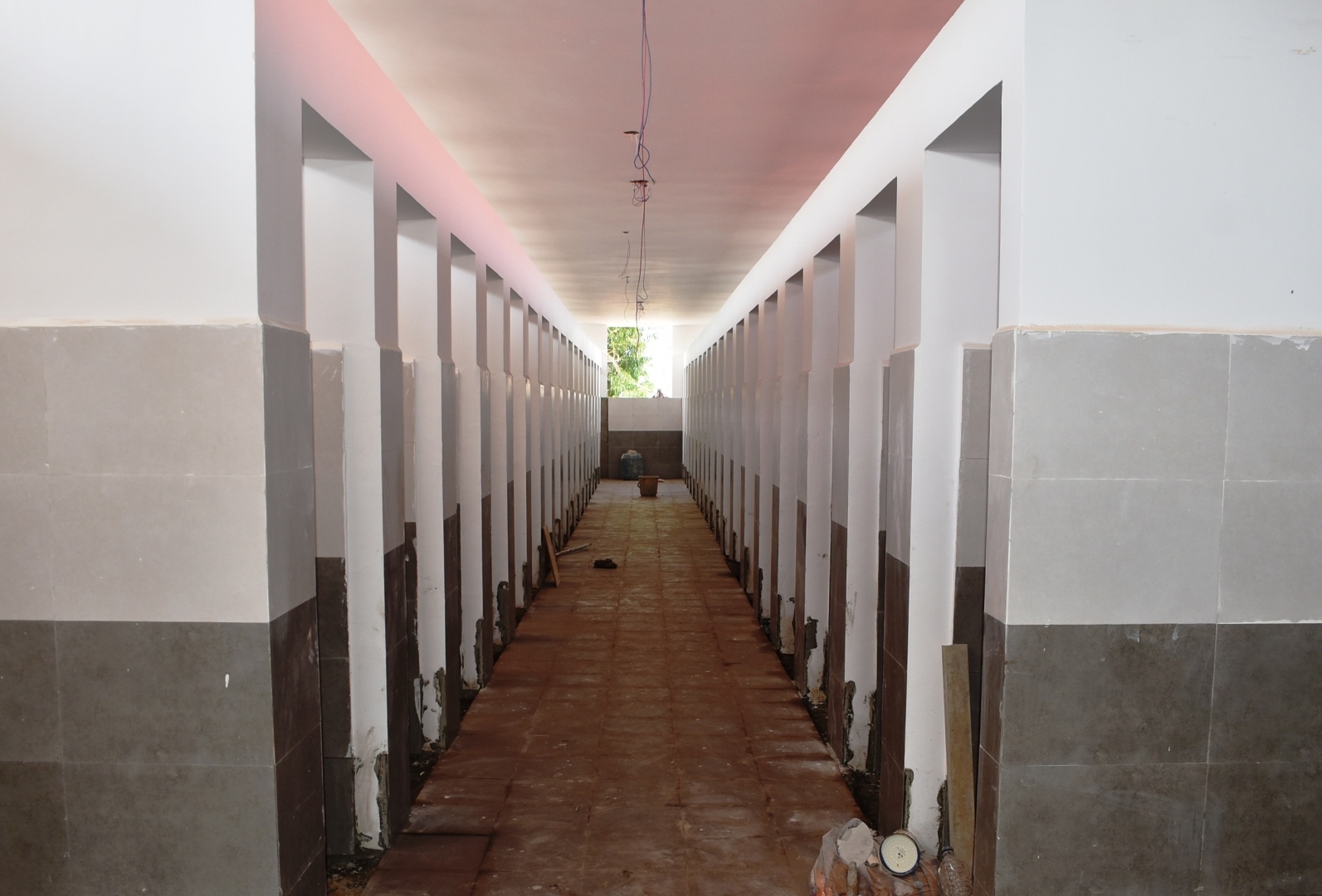
Despite a much-needed upgrade, Cutbona’s new 50-seater toilet block faces challenges in funding and maintenance.
MARGAO
Last year’s cholera-related fatalities appear to have finally propelled authorities into action, leading to the long-overdue implementation of the decade-old 50-seater toilet project at Cutbona fishing jetty—the State’s largest and busiest fishing hub.
As the new fishing season kicked off on August 1, the newly constructed toilet block, managed by the Sulabh sanitation agency, was made operational. The facility is expected to serve the thousands of migrant workers employed on the mechanised fishing vessels that operate out of the Cutbona jetty.
Additionally, work is underway on another 8-seater toilet block, along with washroom facilities, which are expected to be commissioned soon. Together, these additions aim to significantly improve sanitation standards at the jetty.
However, a critical question remains unresolved: Who will bear the responsibility for the facility’s upkeep and maintenance? Will it be the government, the stakeholders such as boat owners and fisheries cooperatives, or the migrant workers themselves through a user-fee model?
This contentious issue is already sparking debate. Sulabh has proposed a fee of Rs 5 for toilet use and Rs 15 for bathing. Yet concerns are being raised about the feasibility of this model, especially considering that many migrant workers may be unfamiliar with or hesitant to pay for the sanitation facilities. There are fears that, despite the new infrastructure, some workers may continue to defecate in open areas nearby—undermining the very purpose of the sanitation project.
A senior official of the Sulabh sanitation agency pointed out that it would be nigh impossible to ensure the upkeep and maintenance of the toilets unless the users pay for the use of the facility. “Sulabh has prescribed a user fee of Rs 5 for toilet use and Rs 15 for bathing. We understand the situation where the user fees may drive away the workers from using the facility. But we will be hard-pressed to maintain the facility unless the users pay the prescribed fees,” he said.
The official added: “Let the authorities, in coordination with the boat workers, work out the user fee payment mechanism for the migrant workers. Till such time, we will charge the user fees for anyone using the toilet facility.”
To tide over the situation, the agencies had mulled a meeting with the stakeholders to explore the possibility of a lump sum payment to Sulabh, however, the effort did not yield results.
Expensive fix sans a treatment plant
Another contentious issue likely to trouble fisheries stakeholders is the lack of a proper Sewage Treatment Plant (STP) to handle waste from the 50-seater toilet block at Cutbona fishing jetty.
While Sulabh, the agency operating the facility, claims to have constructed a septic tank and soak pit system for sewage treatment, the area’s poor soil absorption capacity may render this setup ineffective in the long run. With the soak pit likely to fail, Sulabh may be forced to resort to transporting waste using night soil tankers.
Sources indicate that the nearest functional STP is located in Margao, and transporting sewage from Cutbona to Margao could prove to be an expensive affair. A single trip by a night soil tanker reportedly costs around Rs 5,000. If even one trip per day is required, the monthly expense would exceed Rs one lakh—a recurring cost that raises serious questions about financial sustainability.
This brings the debate full circle: Who will bear the burden of these mounting operational costs? The government? Boat owners? Fisheries societies? Or will the cost be indirectly passed on to migrant workers?
“These are issues that demand urgent answers from both the government and the fishing community stakeholders,” a Sulabh official remarked. “Discharging untreated sewage into the River Sal is not an option, especially when the government is actively working on a rejuvenation plan for the river. A long-term, sustainable solution must be found to tackle the sanitation challenge.”
As the fishing season progresses, the success of the new sanitation infrastructure may well hinge on resolving these pressing logistical and environmental issues, sources said.
As authorities and stakeholders deliberate on the financial sustainability of the facility, it becomes increasingly clear that awareness, education, and cooperation will be key in ensuring the success of this long-awaited sanitation initiative.